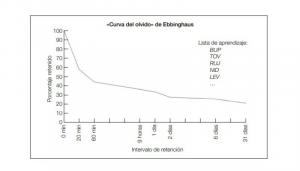The routines and mindset of creative people
Living implies solving (or, at least, trying to solve) a series of daily problems that never cease, of greater or lesser importance according to the circumstances, luck and personality of each person.
Most problems can be solved routinely, imitating the solutions that have been instilled in us or that we see applied by the society that surrounds, or in a different and personal way, looking for originality, trying to find an alternative best.
Creativity: in search of better solutions
All problems, by definition, have at least one solution; since if a situation does not have a solution, it ceases to be a problem and becomes a tragedy, misfortune or bad fortune. Some mathematical problems (exact and pure sciences) present unique solutions; Some mental or philosophical problems present two opposing solutions (they are the “to be or not to be” dilemmas, for example).
But the most common problems of human life (impure sciences and practical philosophy) present a variety of options to deal with them
Although not all of them are easy to see if the look with which we approach them is not accompanied by the creative spirit.- Know more: "What is creativity? Are we all "potential geniuses"? "
The routines of creative people
Does this mean that we should reject by all means the routines that life offers us? Not much less. Routines have an unfair bad reputation. It just means that in the face of any routine solution we must question whether we are capable of optimizing it or finding a better routine, based on other methods and other concepts.
The great progress made by humanity has consisted and will continue to consist precisely in converting solutions hitherto incapable of being systematically solved into efficient routines or that implied inefficient routines. Turning an appendicitis or cesarean section into a simple surgical routine was great progress. Change the routine of going to wash clothes in the river for domestic washing machines, being able to talk on the phone with any inhabitant of the planet at a stroke of the finger have become fortunate routines of our epoch. Millions of successful routine solutions make up our current wellness.
Routines that improve our well-being
As the great philosopher and mathematician said Alfred North Whitehead: "Civilization advances by expanding the number of important operations that can be carried out without having to think about how to do them." Creating a routine to solve a problem where there was none is one of the greatest possible greats of creativity: antibiotics to cure infections; Internet to expand knowledge, they are paradigmatic examples.
Preventing Alzheimer's, defeating cancer, avoiding enormous economic inequalities or reversing climate change are four of the many pending challenges that we currently face.
Tips to be more creative
The first step of the creative is to detect a problem where the rest of humanity does not see it or does not dare to face it. Without making the mistake of confusing creative nonconformity with systematic discontent, the rebel without a cause, the inoperative complainer. The second step is to define and conveniently define the scope and scope of the problem.. The third will be to find what solutions exist in other countries or environments different from our usual one. The Internet and its search engines are, at this point, an invaluable help.
If we find what we were looking for, we will replace the routine of our fellow human beings with the one we have learned online. We will be innovative and we may have followers and create trends. Otherwise, we will enter the fourth stage of the process: creative reflection, the active search for alternatives. It is the phase in which we will have to resort to our right hemisphere, to our intuition, to our unconscious, to our sensory stimuli, to our dreams, to our open mental associations and uninhibited. And at this point is when the texts that teach us to trust our sensory stimuli are useful for our brain, avoid creative blocks of any kind and employ mental strategies, techniques and methods to help the essential inspiration. Much has rained since Alex F. Osborn he invented in 1957 his famous Brainstorming and great have been the contributions of many authors in aid to creativity.
Creative or visionary?
Being creative does not lie in seeing what no one has seen or doing what no one else was capable of doing (these would, in any case, be two superpowers of superheroes from the comics). Being creative is "thinking what nobody had thought, associating elements that nobody had associated before".
All the great steps of progress have been born of an imaginative mind that has associated with freedom things that until then no one had dared to put together. Being creative is not about seeing what no one has seen before or having magical power to transform ideas into reality. Being creative consists of seeing the same thing that everyone sees, but thinking things about it that nobody had ever thought before, making a new association brought about by the imagination. With the help of the right mental strategies.
It may interest you: "The 14 keys to enhance creativity"
Slow but persistent progress
Everyone knew since prehistoric times that a hollowed out log could navigate like a nutshell; and they broke their arms rowing to move it. Everyone had observed that the wind can push the leaf of a plant and carry it long distances. But centuries had to pass before someone imagined a leaf tied to the shell of a walnut with a vertical stick. It is very possible that 3,500 years ago it was an Egyptian child who said to his parents: “I want to test whether the wind who drags a palm leaf can push a shell over the Nile ", and his parents would say:" How beautiful idea! We will help you to prove it ”.
The invention of sailing was the main technology of maritime transport until the invention of steam in the late 19th century. All the great world empires relied on it to trade and impose their military dominance. But it was humanly impossible for the Egyptian child we have imagined to foresee the true dimension of his creation. Well, we must not doubt it, also in our time, a child could open the key to the mental concept that we need for our technological progress from the evolved objects that surround us.
Changing paradigm
It is convenient for us to be perceptive, attentive to the creativity of our most distinguished minds: children and good creatives. The blackness and immensity of the unsolved or poorly resolved problems that threaten us, forces us to resort, without a doubt, to it.
If we are allowed a play on words: We must acquire the routine of looking at all the problems that surround us in a creative way. To build routines that solve for us in a systematic and stable way, the problems of humanity that we are not solving in an adequate way.
Bibliographic references:
- Demory, B. Creativity Techniques. Granica, 1997.
- Guilera, L. Anatomy of creativity. FUNDIT- ESDI, 2011.
- Siqueira, J. Applied Creativity: Tools, techniques and key attitudes to be more creative. CreateSpace, 2013


